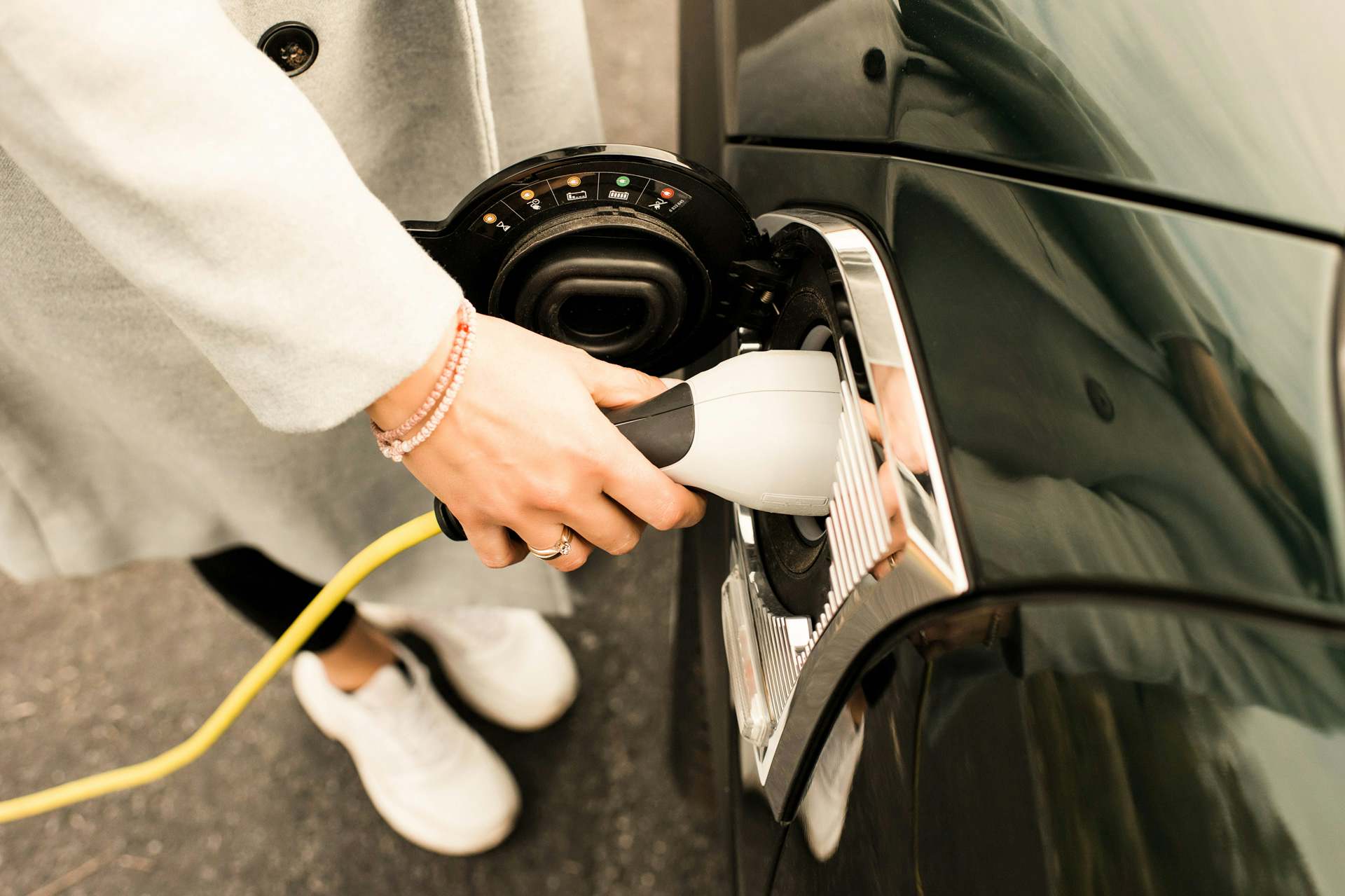Solar
Solar
Battery Storage
Battery Storage
Battery Storage
EV Charger
EV Charger
EV Charger
Heartbeat
Smart Energy Manager
Heartbeat
About Us
About Us
Learn
Featured Articles
Sizing Up A System
Finance & Rebates
Learn
Now servicing New South Wales, Victoria, Queensland and South Australia
Request PricingThe Electric Vehicle revolution is upon us, powered by solar panels. Batteries are continuing to increase in efficiency and decline in cost, and the people are becoming increasingly more environmentally conscious.

For many people who have yet to take the plunge and invest in solar, one of the burning questions we often get is around the number of solar panels they will need to charge an electric car. People want to strike a balance between efficiently powering their homes, keeping their batteries topped up, and ensuring their electric car has enough charge to get them around town.
Fortunately, the vast majority of installations across Australia are able to charge a car using their solar panels and have more than enough left over to keep the household appliances ticking over. We’ve used some industry averages and made a few assumptions to help you work out the number of panels you will need to charge your electric vehicle.
One of the primary determining factors around how many solar panels you will need to charge your electric car is the amount of power it consumes per km. We can use the per kilowatt-hour range of the most popular vehicles to determine the amount of energy they will require and the type of distance we can expect to get. Below are some of the best electric cars on the market and their range per kilowatt-hour:
Tesla Model 3: 7 kilometres
Chevrolet Bolt: 6.4 kilometres
Mitsubishi i-MiEV: 6.3 kilometres
2016 Nissan Leaf: 5.7 kilometres
Tesla S sports car: 5.3 kilometres
There is some variability in the distances as electric vehicles don’t allow their batteries to run completely flat, so the real figures are slightly higher. It also depends on your driving style, if you are heavy on the accelerator and then hit the brakes hard, you’ll get less mileage than someone who drives more carefully.
We’ll work with the 7-kilometre figure for the rest of the article just to keep calculations consistent.
The charging process is not 100% efficient, so some energy is lost when you have your car hooked up. These losses occur during the conversion of AC generated by your home to the DC used by batteries, and from the batteries themselves. So you will need to generate slightly more power than prescribed to account for these losses.
Depending on the model of your electric vehicle and the charging method you use the efficiency will vary. Expect poorer charging results from standard home power points than the industry-standard home chargers that cost extra to install. However, a good rule of thumb is to assume you will get around 90%.
So if you take the 7 kilometres per kilowatt-hour battery pack and make sure to drive carefully, you are likely to achieve 6.3 kilometres per kilowatt-hour of charge. But for the sake of round numbers, let’s be conservative in our estimate and assume you will average 5 kilometres per kilowatt-hour.
The average Australian drives 38 kilometres a day, so if you use the 5 kilometres of range figure from above for each kilowatt-hour of power, then you are going to need just shy of 8 kilowatt-hours of energy a day.
Of course the actual distances you travel each day will vary widely depending on where you live. So you’ll need to work out your daily average to get accurate results.
The easiest way to charge an electric car using your solar panels is to use a standard power point during the day when a surplus of energy is being generated. Using a regular outlet is referred to as Level 1 charging and tends to be incredibly slow and charges at a rate of 2.3 kilowatts.
Level 2 charging is considerably faster with an output of 3 to 7 kilowatts but will require the installation of a special charger in your garage or outside. Depending on the manufacturer of your vehicle, you may have to get a Level 2 charger to be covered by warranty.

Level 3 charging comes from dedicated public chargers and is rapid. They can charge vehicles up to 32 times faster than a Level 2 charging port and can completely charge some cars in 30 minutes. However, these are typically government or private sector funded and not for domestic use.
Depending on whether you use Level 1 or Level 2 charging, the power needed from your solar panels will vary. Slower charging lowers the likelihood you will need to use the grid at all but is slow. Using a faster charger means it will be topped up quicker, but at peak times of power usage in your household, your solar system will probably not cover the increased demand and so some help from the grid may be required.
Driving the Australian average of 38 kilometres a day and getting 5 kilometres per kilowatt-hour of electricity from your battery means you will need 7.6 kilowatt-hours of power a day. The typical Aussie solar installation gets around four kWh per day for each kW of solar panels, which means a 5kW solar system provides 20 kWh of power in a day.
So you will only need a 2kW solar system to provide enough energy to power your electric vehicle. How many solar panels will you need to charge your electric car? If you have a newer system with 370W panels installed, you will need just 6 panels, if you have older 250W panels, then eight panels will meet the energy demands of your vehicle. Realistically nearly all of our installs are far larger than this, and the extra capacity means there is more than enough solar power to run both the household appliances, charge an electric vehicle, and charge a battery for the house so that you can use excess solar power at night. A 10kW solar system is a popular size for households aiming to do all of this.
So in summary, there are several variables that you will need to account for when trying to figure out how many panels you will need to power your electric car. The vehicle’s model, the distance you drive, your driving style, and environmental conditions all impact the car’s power consumption.

The average Australian household can partially power their vehicle when needed with just 2 kilowatts of energy, or around 6-8 panels depending on the panel’s rating. With the cost of solar continuing to decrease and battery technology improving at such a rapid pace, it is now possible to build an ‘electric lifestyle’ around your Electric Vehicle, where you can leverage your solar installation to cut your costs even further.
Our solar experts will help you find the right system for your home.

Get all the right information before installing a solar power system for your home.
